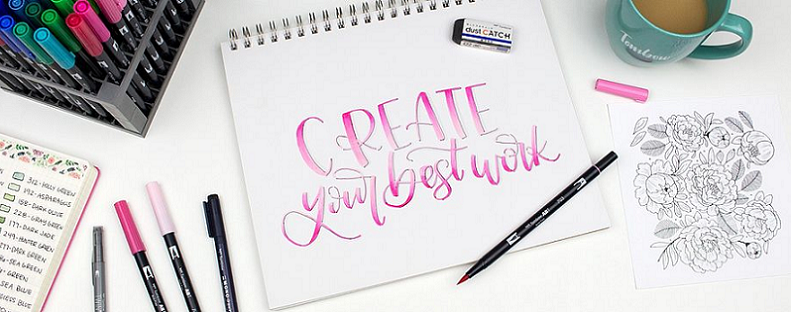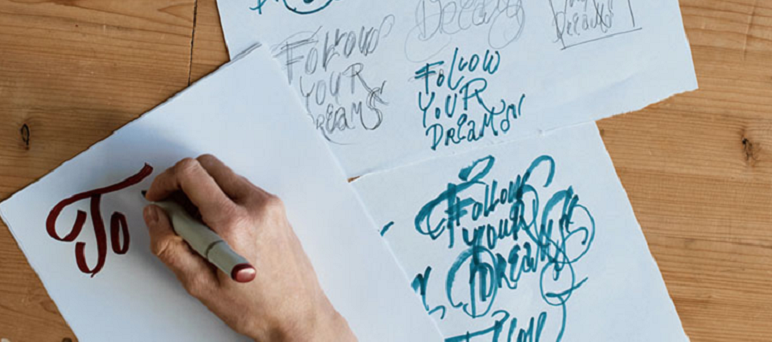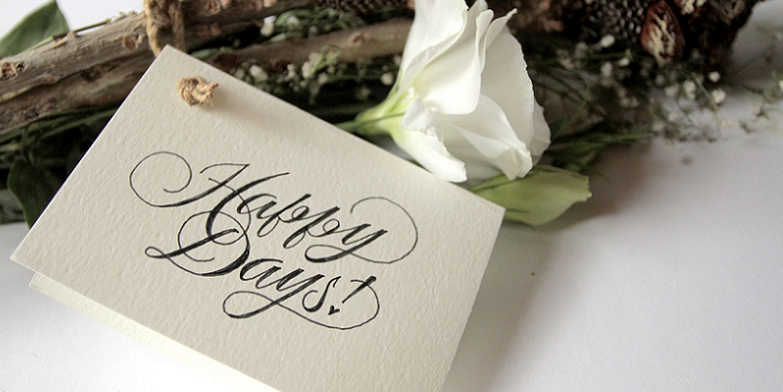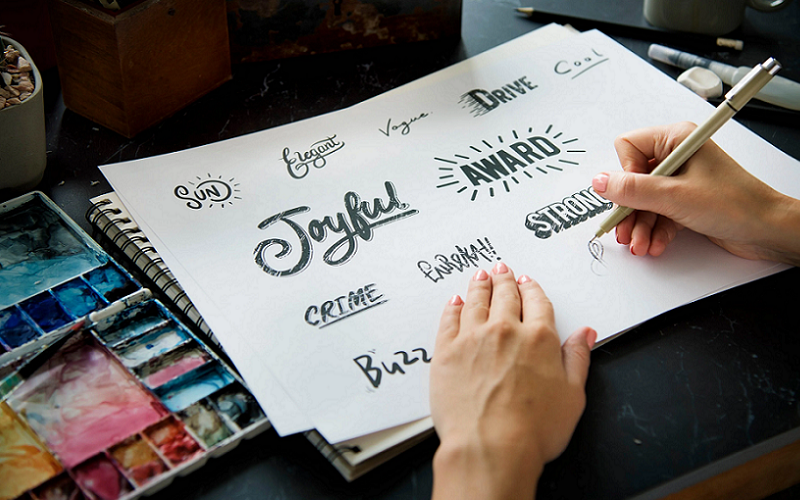Hand lettering has become increasingly popular in recent years, with many artists and designers turning to this timeless art form to create stunning typography. Unlike digital fonts, hand lettering is a unique and personal expression of one’s creativity, and can add a distinct touch to any design project. Here we explore the art of hand lettering and provide tips for creating beautiful typography using pens and ink.
Hand Lettering and Its Popularity
Hand lettering is the art of drawing letters and words by hand using pens, pencils, or brushes. It is a form of calligraphy that involves creating unique and customized lettering styles. Hand lettering has become increasingly popular in recent years due to its unique and personal touch that it brings to design projects.
Unlike digital fonts, hand lettering can be customized to fit a specific project and adds a human touch that can’t be replicated by computer software. Hand lettering has also gained popularity due to the rise of social media platforms such as Instagram, where many artists and designers showcase their hand lettering skills. The popularity of hand lettering has also led to an increase in workshops and tutorials for beginners, making it easier for anyone to learn and practice this art form

Getting Started with Hand Lettering
Getting started with hand lettering requires basic materials such as pens, paper, and ink. Choose the right type of pen and ink based on the style of lettering that you want to create. Different lettering styles require different pens and inks, so experiment and find what works best for you.
Understanding the different styles of lettering is also crucial to getting started with hand lettering. Some popular styles include serif, sans-serif, script, and display lettering. Once you’ve chosen your materials and style, practice consistently to improve your skills. It’s also helpful to have guidelines for spacing and alignment, and to experiment with adding embellishments and flourishes to make your lettering more unique.
By starting with the basics and practicing regularly, anyone can learn the art of hand lettering.
Tips for Creating Beautiful Typography
Creating beautiful typography requires attention to detail and a willingness to experiment. One important tip is to pay close attention to spacing and alignment to ensure that the lettering looks neat and professional.
Adding embellishments and flourishes can also help to make the typography more unique and visually appealing. Another important tip is to experiment with different styles and techniques to find what works best for you.
Practicing regularly is also crucial to improving your skills and developing your own personal style. Using high-quality materials such as paper and ink can make a big difference in the final outcome of the typography.
Creating beautiful typography is a combination of art and science. While there are some general rules to follow, such as proper spacing and alignment, there is also room for creativity and personal expression. Learning to write eloquently can help you to writing persuasive essays. Here are some tips for creating beautiful typography that will make your work stand out.
- Start with the basics: When starting out with hand lettering, start with the basics. This includes learning how to draw basic letterforms and practicing consistent spacing and alignment. Starting with simple exercises can help build muscle memory and improve your overall control and precision.
- Experiment with styles: There are many different styles of hand lettering, so experiment with different styles to find what works best for you. Some popular styles include serif, sans-serif, script, and display lettering. Each style has its own unique characteristics, and experimenting with different styles can help you find your own personal style.
- Use high-quality materials: Using high-quality materials such as paper and ink can make a big difference in the final outcome of your typography. High-quality paper allows for smoother strokes, while high-quality ink produces vibrant and consistent colors. Using low-quality materials can result in smudging and uneven lettering.
- Add embellishments and flourishes: Adding embellishments and flourishes can help make your typography more unique and visually appealing. These can include swirls, loops, and other decorative elements. However, use these elements sparingly, as too many can make your typography look cluttered.
- Use proper spacing and alignment: Proper spacing and alignment are crucial for creating neat and professional-looking typography. Guidelines can be created using a ruler and pencil or by printing out a template. This helps ensure that the letters are evenly spaced and aligned.
- Practice regularly: Practice is essential for improving your hand lettering skills and developing your own personal style. Practicing regularly can help you perfect your techniques and experiment with different styles and embellishments. Have a consistent practice routine to build muscle memory and improve your overall control and precision.
- Seek feedback: Seeking out feedback from other artists and designers can be helpful in improving your hand lettering skills. Feedback can help you identify areas for improvement and provide new ideas and inspiration.

Practice Makes Perfect with Typography
Practice is essential for improving your hand lettering skills and developing your own personal style. Practicing regularly can help you to perfect your techniques and experiment with different styles and embellishments. Start with basic lettering exercises, such as tracing and copying letters, and gradually move on to more complex projects.
Having a consistent practice routine can help to build muscle memory and improve your overall control and precision. It’s also helpful to practice digitally and explore different software and tools. Seeking out feedback and inspiration from other artists and designers can also be helpful in improving your hand lettering skills.

Taking Hand Lettering to the Next Level
Taking hand lettering to the next level involves exploring new tools and techniques to digitize your work and use it in design projects. One way to digitize your hand lettering is by scanning or photographing your work and using software to refine and enhance the final product.
There are also specialized tools and software designed specifically for hand lettering, such as Procreate and Adobe Illustrator. Incorporating hand lettering into design projects, such as logos or packaging, can add a unique and personal touch that sets them apart from competitors. It’s also possible to monetize hand lettering skills by selling prints, creating custom designs for clients, or offering workshops and tutorials.

